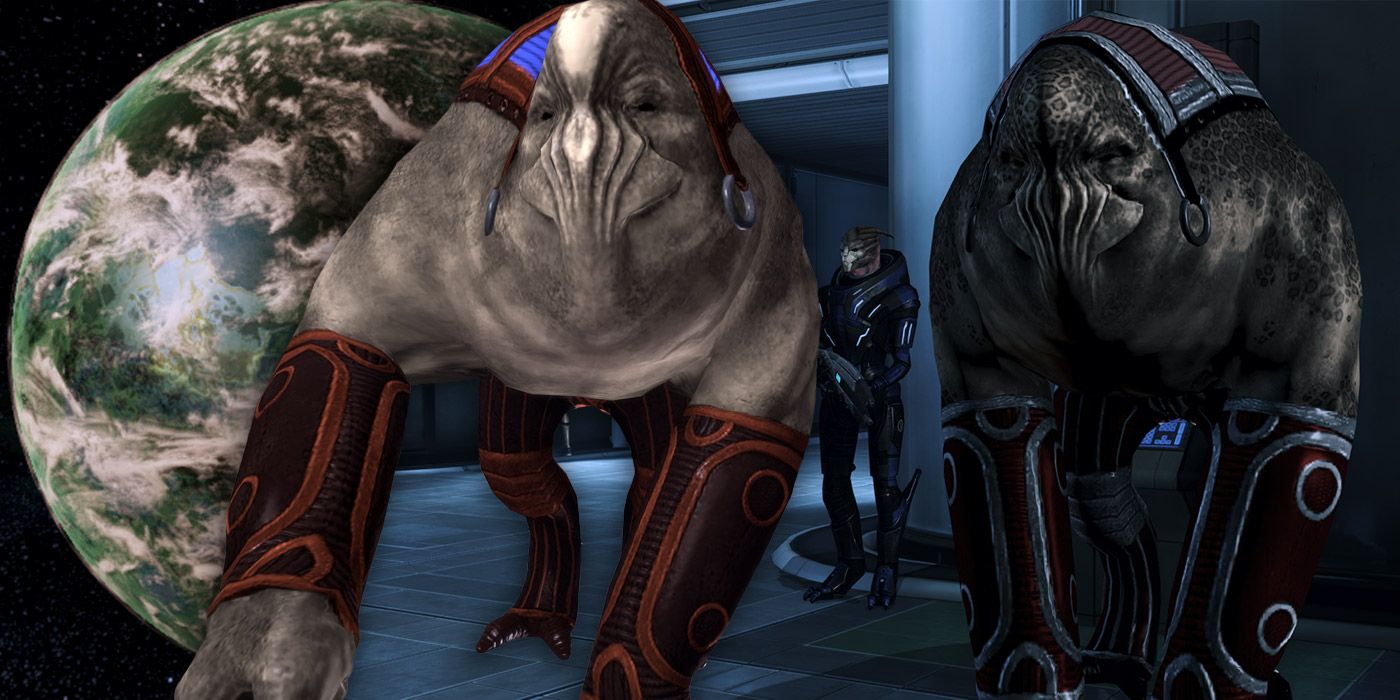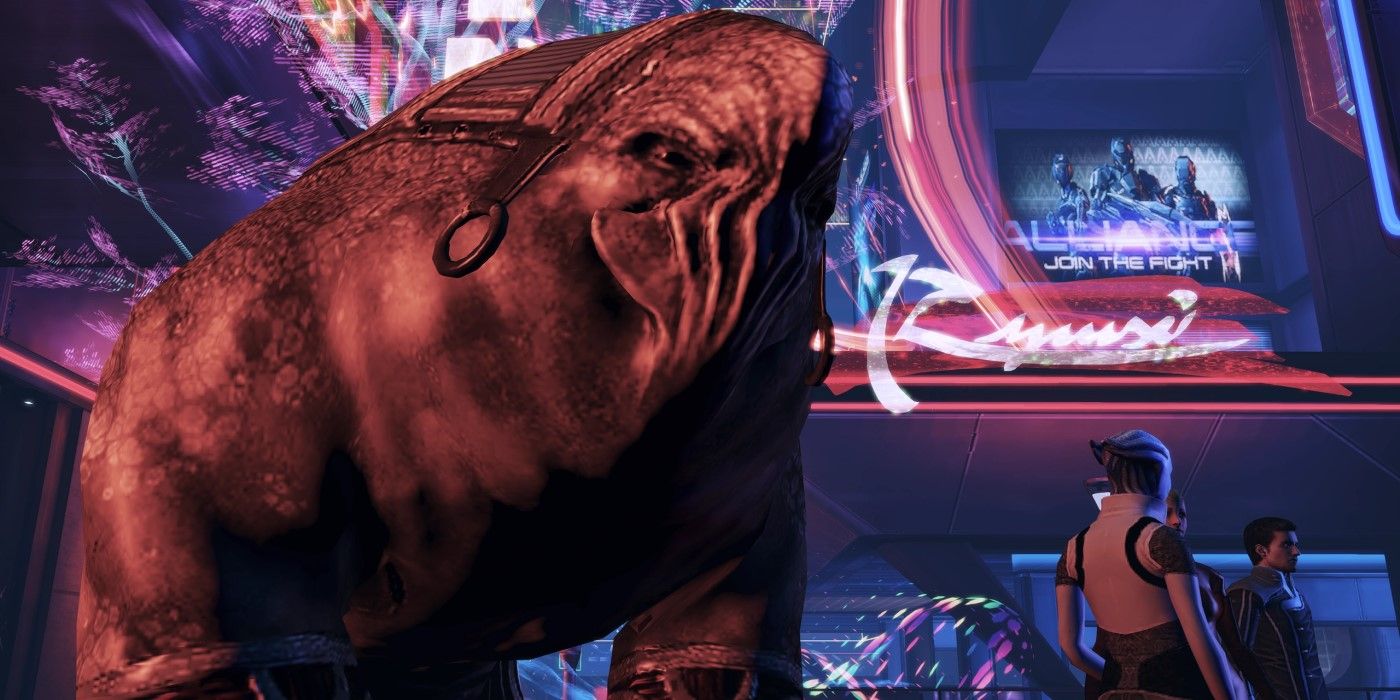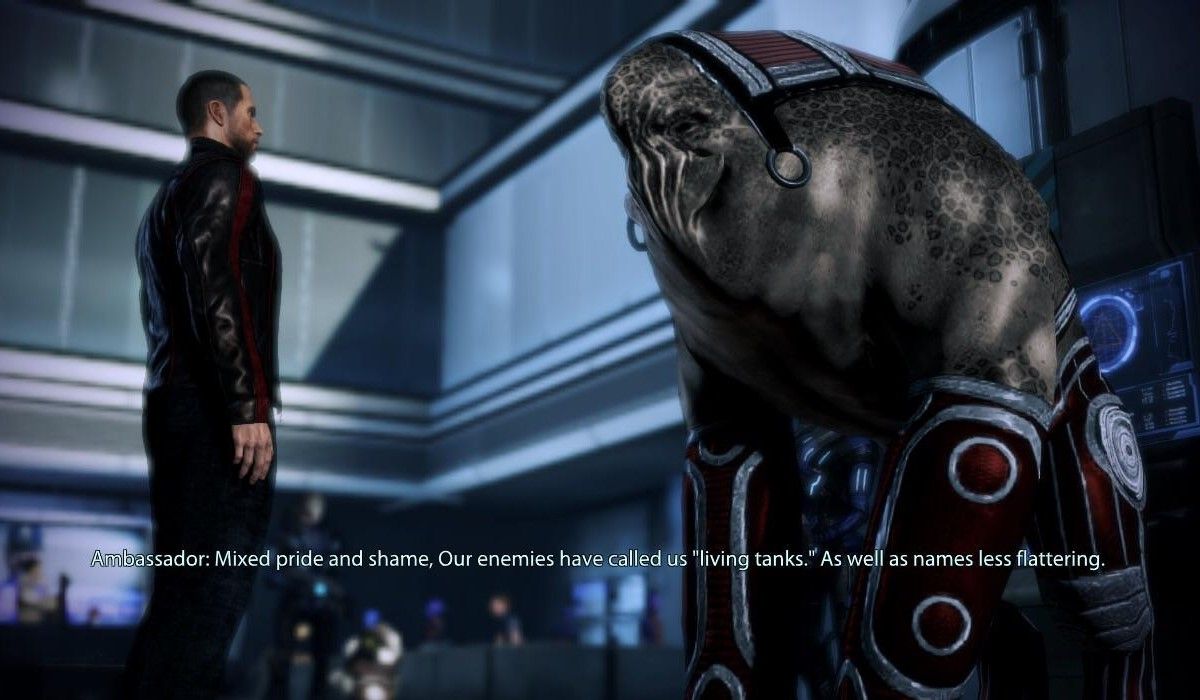A Complete Breakdown of Mass Effect's Hulking Elcor Alien Race

The elcor are some of the most visually interesting alien races found in the Mass Effect universe. Unlike other alien races, elcor cannot be added to Shepard’s crew throughout the original trilogy. However, players can still converse with elcor in places like the Citadel, Omega from Mass Effect 2, and even Peak 15 on Noveria in the original Mass Effect.
Once players encounter an elcor, they’re fairly hard to forget. These aliens are massive and move on four legs—an anomaly compared to many other alien races. Elcor are slow, deliberate, and ultimately one of the most fascinating aliens to interact with during all three Mass Effect games.
Elcor most notably resemble elephants, though they don’t possess tails or trunks. Elcor move with caution and care, but their slow pace doesn’t detract from their strength. Biologically speaking, elcor have a strong sense of smell and at least three stomachs. Their heightened olfactory senses help elcor communicate with one another, but don’t do much when it comes to cross-race communication.
Other alien races have horizontal lips, similar to humans, but elcor lips are actually vertical. Their speech patterns are slow and steady, just like their bodily movements, but their monotone often became misconstrued when talking to other non-elcor. To combat further miscommunication, elcor start their sentences with an emotive statement so whoever they’re talking to understands their intention.
Speech between elcor, though, is largely reliant on smell and subtle body movements. Elcor live longer than humans, but not as long as asari or krogan. By elcor standards, 100 is still relatively young, while 400 is considered old. Additionally, young elcor are called “calves.”

Elcor hail from their homeworld of Dekkuna. Once upon a time, elcor used to travel the lands in large tribal groups. Once the asari contacted them, though, the elcor quickly established a routine route to the Citadel. Even though they were one of the most prominent species in Citadel space, they are still forced to share an embassy with the volus.
When the Reapers began invading the Milky Way in 2186, the elcor navy was taken out quickly, leaving many stranded on Dekkuna. In Mass Effect 3, Commander Shepard can choose to help the elcor evacuate those stuck on the homeworld. Though there’s no gameplay involved, players must speak to the unnamed elcor ambassador in the Citadel.
Much like the quarians and drell, the elcor were missing from Mass Effect: Andromeda. Their absence is acknowledged in-game, and the companion book Mass Effect: Andromeda: Annihilation talks about the struggle that the quarian ark has to get to the new galaxy. It’s unclear whether players will get to revisit Andromeda any time soon thanks to the implications of the Mass Effect 4 trailer.

The elcor’s slow and calculated movements and thoughts developed over time thanks to the high-gravity environment of Dekkuna. Elcor are cautious, conservative, and not afraid to make plans that take centuries to develop. The elcor government, known as the Courts of Dekkuna, has a reputation for being extremely stable, following the advice of elcor elders as necessary.
Elcor also invest time into the arts and entertainment, with an all-elcor version of Shakespeare’s Hamlet earning an award and becoming widely loved throughout Citadel space. Also, despite their stable and slow reputation, there are some notable outliers within elcor history. Resident turian Garrus will talk to Commander Shepard about the elcor serial killer he encountered during his time in C-Sec.
Though players don’t interact with the elcor as much as other alien races throughout the Milky Way, they’re still interesting additions that make the galaxy feel more alive and, in a way, diverse. It’ll be interesting to see how the elcor are revamped for Mass Effect: Legendary Edition.
Mass Effect: Legendary Edition releases Spring 2021.
 Reviewed by Unknown
on
December 18, 2020
Rating:
Reviewed by Unknown
on
December 18, 2020
Rating:

Post a Comment